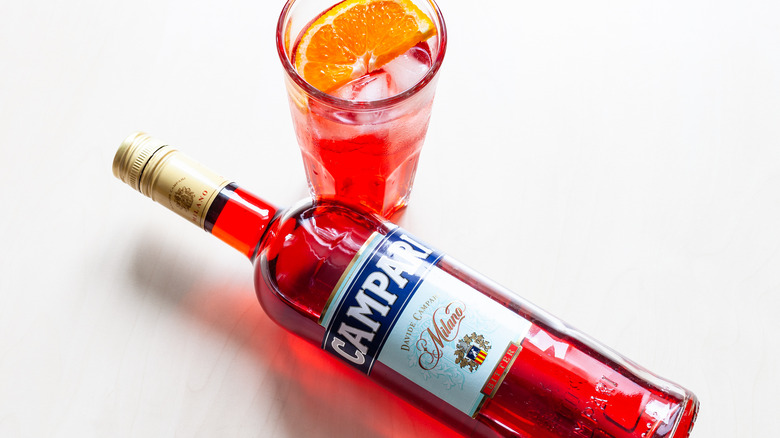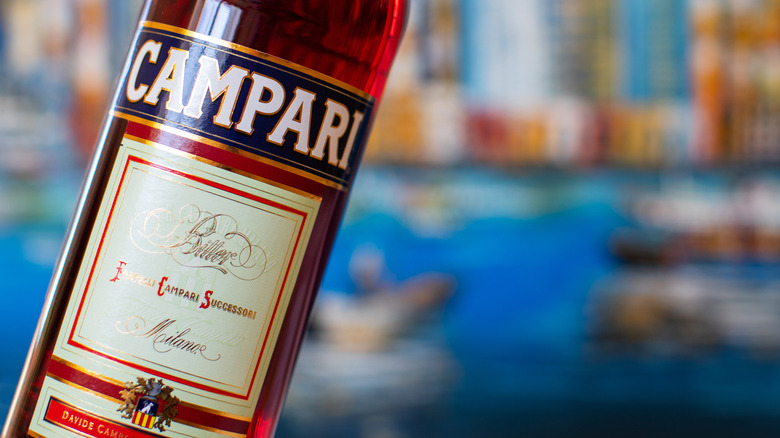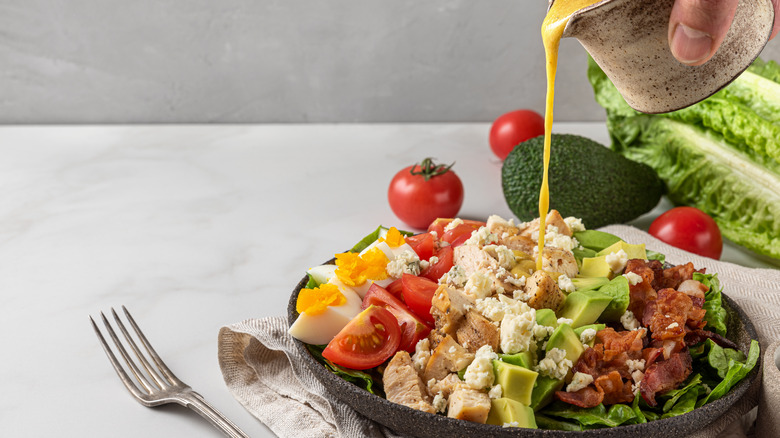Why You Should Try Adding Campari To Salad Dressing
While the vibrant bottle of Campari might call from the liquor shelf, it probably isn't the first bottle you grab when making a salad dressing. Although Campari can also be a tomato, this recipe recommendation refers to the vermillion-colored Italian bitter. The brand refers to the liquor as "Red Passion;" it's the distinctive flavor that hasn't been changed since the 1860s.
Today, Campari is at the heart of the classic Negroni recipe. The classic cocktail is delightful in its simplicity. Created in a rocks glass, the cocktail consists of equal parts of gin, vermouth, and Campari.
While that aperitif has been a favorite of mixologists, a riff on the classic became a TikTok trend. The Negroni Sbagliato replaces the gin with Prosecco, but the robust flavor of the Campari still comes through in each sip. Given that many people are swooning over the classic Italian liquor, some cooks are looking to use it beyond the cocktail glass.
Campari brings bold, zesty flavors to salad dressing
While Campari might brighten an aperitif, the robust flavor of the Italian liquor can boost recipes beyond the cocktail glass. Chef and cookbook author Francis Mallmann spoke to Epicurious about using Campari in a salad dressing. The premise of his Campari salsa is to highlight contrasting flavors that can challenge a palate. By combining the liquor with grapefruit and rosemary, the salsa tops a roasted cabbage dish. The resulting flavor brings bold bitterness, subtle sweetness, and pungent cabbage together for a full-bodied flavor experience.
Although Mallmann suggests the roasted cabbage pairing, he adds that other various foods can also benefit from the Campari salsa. Other roasted vegetables, such as asparagus or grilled arugula, for instance, make for a delightful swap. Also, Mallmann believes that a hearty game meat, such as venison or boar, could stand up to the bitterness. Lastly, roasted duck avoids the overly sweet notes that some orange sauces add to poultry.
With the Campari salsa idea, the flavors are meant to challenge the palate. It is far from subtle yet totally unforgettable. For anyone who wants to discover that red passion in a new way, this salad dressing is waiting to be poured.
How can liquor be used in salad dressings?
While there are various types of booze-infused foods, the idea of liquor flavoring a salad dressing might encourage some people to eat their greens. Unlike the fruit at the bottom of the sangria glass or grandma's infamous rum cake that has been heavily soaked, this recipe concept is more about a subtle flavor addition at the hands of just a few teaspoon or two of spirits. Although the liquor isn't cooked off as in a fiery flambé, the small amount should not lead to overindulgence.
Lifestyle Asia also recommends several salad dressing recipes that are infused with various liquors. That ingredient highlights the umami notes and offers balance to the acid and oil in a traditional dressing. From a smoky bourbon to a vibrant tequila, these types of dressings transform a bland, boring salad into a zesty, bright bite.
Even though there might not be a boozy salad dressing on store shelves, a home cook could jazz up that pre-made bottle. For anyone thirsty to shake up a new salad routine, the secret ingredient might be waiting on the liquor shelf.


